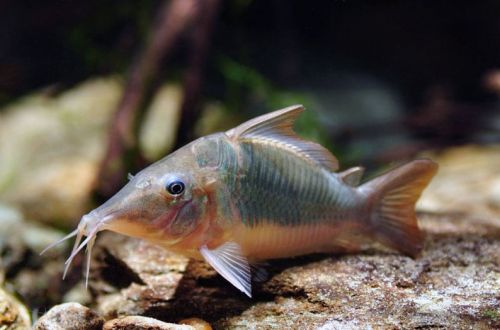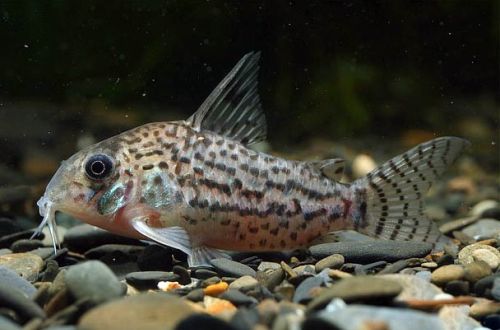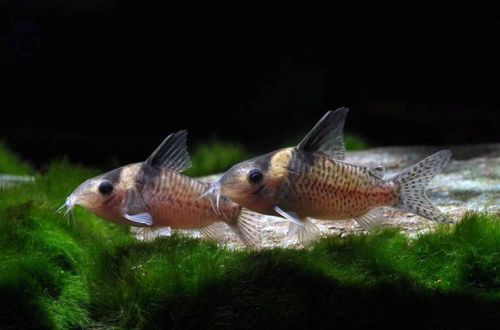
Brochis nosy
Brochis nosy or Corydoras long-ribbed, scientific name Corydoras multiradiatus, belongs to the family Callichthyidae. The second part of the name comes from the Latin word multi, meaning “many”, and radiatus, “radiant”, indicating a large number of rays in the dorsal fin in this species.
Until 2003, it belonged to the genus Brochis and, accordingly, had a different scientific name – Brochis multiradiatus. In various sources, it is still used and can be considered a synonym.

A large and unpretentious representative of the corridor catfish, it gets along well with most other fish species, does not require special conditions for its maintenance, and is even able to adapt to a deficiency of oxygen dissolved in water.
Contents
Habitat
It comes from the northwestern part of the Amazon Basin from the territory of modern Ecuador and Peru. It occurs in numerous tributaries, streams and backwaters, in clusters of interconnected lakes.
Brief information:
- The volume of the aquarium – from 240 liters.
- Temperature – 20-26°C
- Value pH — 6.0–7.0
- Water hardness – soft (2-12 dGH)
- Substrate type – sandy
- Lighting – subdued or moderate
- Brackish water – no
- Water movement – light or moderate
- The size of the fish is 8–10 cm.
- Meals – any
- Temperament – peaceful
- Keeping in a group of 6-8 individuals
Description
Adults reach a length of about 10 cm. Outwardly, it resembles its close relative, the Giant Emerald Catfish, but has a slightly enlarged head and an elongated mouth. Color shimmers from orange to emerald green depending on the light. At the mouth there are antennae, with which the catfish sorts through the ground in search of food. Sexual dimorphism is weakly expressed, it is extremely difficult for a non-specialist to distinguish a female from a female.
A characteristic feature is the dorsal fin stretching to the tail, which has 17-18 rays, while in other corridors their number is usually 6-8.
Food
Accepts all types of popular dry, frozen and live foods. The only important condition is that they must be sinking. A varied diet has a positive effect on the well-being of fish and their appearance.
Maintenance and care, arrangement of the aquarium
A group of catfish will require a tank of 240 liters or more. The design is arbitrary, selected based on the preferences of the aquarist and / or the needs of other fish in the aquarium. The only important condition is the presence of a soft sandy substrate to avoid antennae injuries.
Brochis nosy feels great in slightly acidic water with low carbonate hardness. An efficient filtration system, regular cleaning of the soil from organic waste and weekly replacement of part of the water (15–20% of the volume) with fresh water will allow maintaining acceptable water quality.
Behavior and Compatibility
Peaceful calm species, compatible with most tropical fish, including aggressive ones, if they are similar in size to Brochis. Keeping in a group of 6-8 individuals, with a smaller number or alone, it is likely that the catfish will become intimidated, will constantly hide, refuse food.
Breeding / breeding
At the time of this writing, it was not possible to find reliable information about successful breeding experiments in a home aquarium. For sale come from fish farms or, more rarely, are caught from the wild.
Fish diseases
The main cause of most diseases is unsuitable living conditions and poor-quality food. If the first symptoms are detected, you should check the water parameters and the presence of high concentrations of hazardous substances (ammonia, nitrites, nitrates, etc.), if necessary, bring the indicators back to normal and only then proceed with treatment. Read more about symptoms and treatments in the Aquarium Fish Diseases section.





